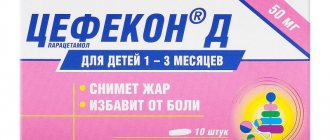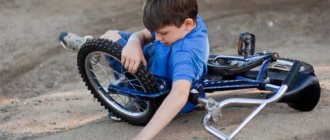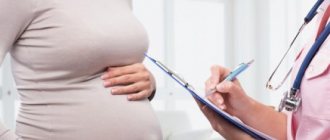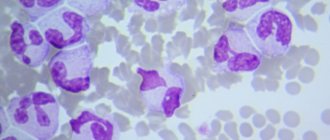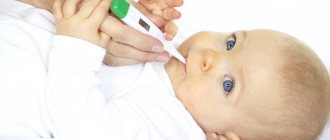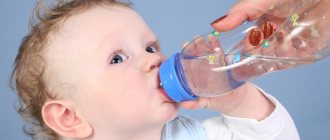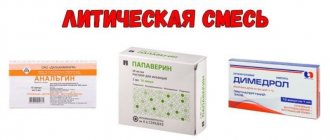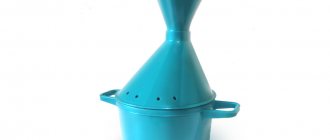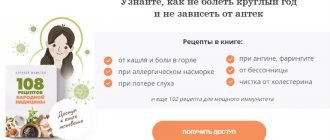No matter how carefully parents monitor their little child, the young researcher still often encounters everyday troubles. One of them is burns from hot water or drinks, contact with the heated surface of a kitchen stove, an iron or light bulb, or steam. In this situation, parents should be collected; it is best to prepare an emergency first aid kit in advance. Today we will talk about what medicines need to be stored in the refrigerator, how to use them, and what to do if a child is burned.
What is a burn, what degrees of damage exist?
A burn is damage to soft tissues after skin contact with high temperature, chemicals, etc. Medical workers distinguish 4 degrees of severity; let’s look at the primary signs of each of them.
- I. May be accompanied by slight swelling, slight redness, mild pain or itching. The child is treated at home.
- II. It is characterized by redness, the appearance of bubbles and blisters of irregular shape, which in no case should be pierced. Treatment is carried out mainly at home, with the exception of a large affected area.
- III. The skin is red-black, with bubbles and blisters with bloody contents, as well as dark spots. It is necessary to go to the hospital; infection can slow down the healing process.
- IV. The lesion affects not only the upper tissues, but also tendons, muscles, subcutaneous fat, and in difficult situations – bones. If you suspect stage IV, you must immediately go to the hospital; this type is typical for people who have been in accidents, survived fires, etc.
If a child receives a 1st or 2nd degree burn at home, then you can cope with the situation yourself. If the area of affected tissue exceeds 5% of the total surface of the body, then you need to go to a burn center. To measure, use the palm rule: 1 palm (children's) - 1%.
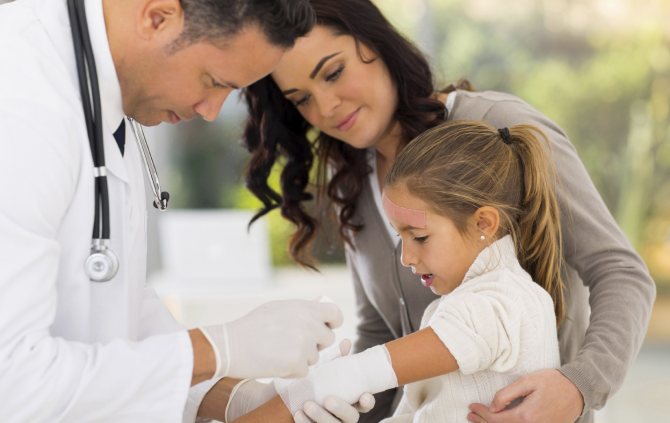
Types and degrees of burns
Because of their activity and curiosity, children often get burned. Every fifth patient with such an injury is a child.
On a note! The most dangerous room for a child is the kitchen, where there is a gas stove. It is here that children in 30% of cases receive burns of varying degrees and types.
Classification of burns:
- Thermal. Skin damage is caused by exposure to substances with high temperatures (boiling water, steam, fire).
- Radiation. They occur during prolonged exposure to the street with high sun activity.
- Chemical. The skin is damaged as a result of chemicals, most often after a child comes into contact with household chemicals.
- Electrical. Occurs when electrical equipment is used incorrectly.
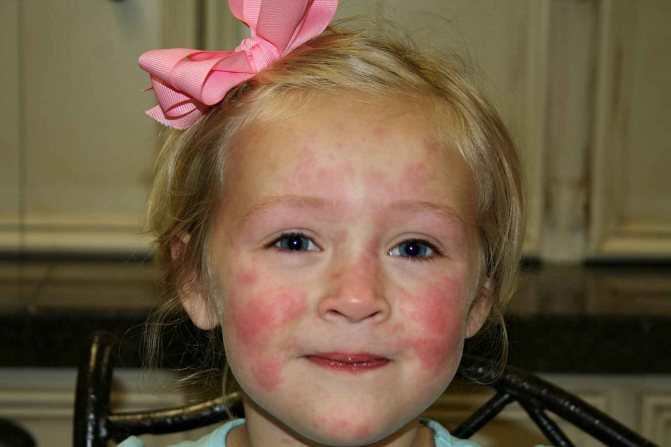
Children may experience radiation burns when exposed to the sun for long periods of time.
Depending on the degree of damage, doctors distinguish 4 stages:
- First. Redness and swelling are observed at the burn site.
- In the second stage, blisters filled with a serous, cloudy fluid are added.
- In the third degree, the lesions are deeper. The injured area becomes blackish in color, scabs form at the site of the wound, and subcutaneous tissue is visible. The child no longer feels pain, since the nerve endings and pain receptors are damaged.
- In the fourth stage, all layers of skin die, and charring of the bone may occur. There is a high probability of developing burn disease and shock, which are life-threatening.
In children, the area affected is of great importance, since the baby’s body is very small.
First aid
If a child is burned by an iron or hot water, the extent of the injury must be immediately assessed. Blisters may appear within a few minutes; in this case, you should not third or stretch the wound. First aid is done like this:
- protect the child from the source or object on which he was burned;
- carefully examine the damaged area; if the injury is not severe, you can hold the injured area under running cool water for 5-10 minutes;
- Apply a dry, clean bandage to the damaged area, using a bandage, gauze, and napkins that will ensure a tight fit and normal air exchange;
- give painkillers; it can be paracetamol or ibuprofen, if the pain is tolerable, then you can do without medications;
- prescribe a drinking regime, change the sterile bandage 2-3 times a day.
You can use antiseptics, applying them to the place where the child burned: Betadine, Chlorhexidine. They are used to make compresses: moisten a napkin and apply it to the damaged area, cover with a bandage. “Panthenol” is effective in the form of a spray; it is applied pointwise to the wound.
Important! Please note that if the bandage with ointment has dried to the skin, it should not be torn off, as this may aggravate the condition of the wound. It is recommended to prepare a weak solution of potassium permanganate to soften the napkin and bandage.
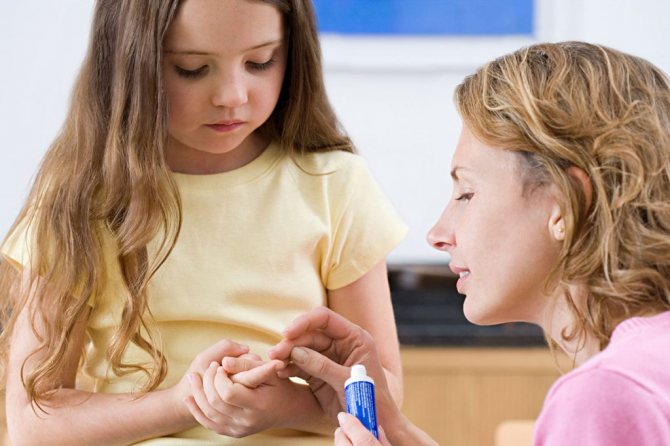
Home remedy for burns
If you don’t have an anti-burn medication on hand, then home remedies for burns can come to the rescue.
The speed of first aid plays an important role in how serious the consequences will be. The best remedy for skin burns is to interrupt contact with the hot surface as soon as possible and cool the damaged area of the skin.
Cooling the skin with water for a burn
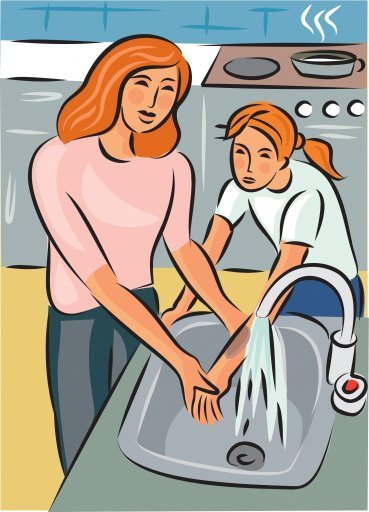
If there are no open wounds, keep the affected area under cold water for at least 10 minutes. Cold will not only help reduce painful symptoms, but will also prevent the burn from spreading further. In case of chemical burns, it is also necessary to quickly wash off or neutralize the substance.
If there are no suitable medications in your home medicine cabinet, turn to proven “grandmother’s” methods.
Folk remedies for burns
- Toothpaste containing menthol can be applied to the site of a minor burn.
It will help relieve pain, protect against germs, and relieve swelling. And if you leave it on the skin in a thin layer, the paste will not allow moisture to evaporate from the skin tissue, which means the surface of the skin will not dry out. A small burn can even be cured with a few applications of toothpaste. - If you have an aloe flower growing at home, you can use its leaves to treat a burn.
To do this, you will need to thoroughly wash and cut one sheet lengthwise and bandage it to the damaged skin. Or you can make a paste from the leaf and even squeeze out the juice for a compress - whatever you have the strength to do. - You can use tea for a compress.
You need to strongly brew black or green tea, wet the bandages with it and wrap the burned area. Thanks to tannins, strong tea helps improve blood circulation, which has a positive effect on healing abilities. - Grated potatoes
relieve swelling and soothe pain. You can also apply a cabbage leaf or a compress with cabbage juice to the burn site.
When choosing a suitable remedy, you should remember that folk recipes are suitable for minor burns, as well as during the healing stage of more serious injuries.
Be sure to consult a doctor in the following cases:
- A burn of greater than 2nd degree of severity affecting a large area of the body.
- A child, an elderly person or a person with serious illnesses was injured.
- It was not possible to relieve the burn symptoms on my own.
- The victim feels unwell after the burn: feels dizzy, nausea, weakness, difficulty breathing, and irregular heartbeat.
- The burned area is the face, neck, groin area.
We also recommend that you consult a specialist before purchasing burn remedies that contain antibiotics, taking antihistamines and serious painkillers. In everyday life, we most often encounter thermal, chemical and radiation burns. With thermal damage, tissue damage occurs due to exposure to high temperatures. Chemical burns can be caused by cleaning products. And the well-known sunburn is a radiation burn, not a thermal burn.
According to the depth of damage, burns are divided into 4 degrees. Most often in everyday life we encounter the first two. In the first degree, the skin turns red, hurts, and then a slight swelling appears. But everything goes away in a few days. With a second degree burn, in addition to pain and swelling, transparent blisters appear. The burn goes away completely within a few weeks.
Depending on the depth of the injury, a remedy for burns is selected. Treatment for a first-degree thermal burn can be done at home, but if you have a large second-degree burn or more severe injuries, you should see a doctor. For burns in children, you should consult a doctor in case of extensive first-degree burns.
The severity of the consequences and the duration of treatment largely depend on how and how quickly first aid was provided. The very first step in case of a thermal burn (a burn resulting from contact with direct fire, a hot surface or liquid, etc.) is to interrupt contact with the source of the burn (hot surface, chemical, etc.). If the burn is chemical, then the first priority is to neutralize the chemical. If you have a sunburn, get out of the sun as soon as possible.
If there are bleeding wounds, you should immediately call an ambulance or go to the emergency room. If there is no wound, then the burn site must be kept under cold running water for 10-12 minutes.
A clean gauze bandage should be applied to the affected area of skin to avoid infection. The most dangerous burns are for children's delicate and thin skin. Even with a minor burn, it is necessary to call a doctor for your child.
To summarize: before the doctors arrive, you need to cool the wound, apply a clean bandage and take pain medication (if necessary). It is recommended to use anti-burn medications and folk remedies for burns of the 2nd degree and above after the affected area of skin has been examined by a specialist.
How to treat the consequences of a burn at home?
Having provided first aid to a child who has been burned, it is necessary to continue treatment using the following types of ointments for thermal burns, which help relieve swelling and prevent the development of the inflammatory process:
- "Levomekol"
- "Miramistin" and others.
The skin is smeared with such products 1-2 times a day; you can use gels such as Apollo, Panthenol, Bepanten, Solcoseryl, the latter is suitable for weeping wounds. If the injury is accompanied by pain, then it is better to use medications with an analgesic effect, for example, “Livian” in the form of an aerosol.
Auxiliary products for burns
Rescuer
Suitable as an additional product. This domestically produced ointment is known for its natural composition and universal healing properties. Most likely, you will find a Rescuer in your first aid kit - use it when treating burns for their quick healing.
Actovegin
It is an ointment that effectively copes with sunburn. In some cases, it can be used to prevent burns after radiation therapy sessions.
Chlorhexidine solution
Suitable for disinfecting burn surfaces. You can apply a bandage soaked in Chlorexidine to the affected area or irrigate the burn several times a day with a 0.5% solution.
Providing first aid for burns to a child
Childhood injuries are associated with severe consequences. It can ruin your future life, leaving ugly scars, and burned tissues lose their elasticity. This causes the child to experience physical and mental discomfort. Therefore, in order to avoid severe consequences, first aid for a burn to a small child should be provided correctly and modernly.
Thermal burns
Iron, stove and boiling water are the most common causes of burn injuries in children. For deep damage, exposure to liquid at a temperature of 70 degrees for just 1 second is sufficient.
What should you do in the first minutes?
- Stop the influence of the thermal agent.
- Remove wet clothes from the body.
- Cool the damaged area with cold water or ice for 15 minutes. In this case, the possibility of frostbite should be taken into account. For severe burns, continue cooling until paramedics arrive.
- Give a painkiller.
- Place a cotton cloth on the wound.
- If necessary, go to the hospital.
This algorithm is only allowed for 1st or 2nd degree burns.
The resulting blister should not be pricked, covered with a band-aid or lubricated with creams. Treatment, in such cases, is prescribed only by a doctor.
Help with chemical burns
In this case, act quickly, as this is one of the most dangerous types of injuries.
What needs to be done?
- Find the source and eliminate it.
- If a chemical gets on things, remove them quickly.
- The burned wound is washed under a tap with cold water.
- Call doctors immediately.
Do not wash burns caused by exposure to aluminum compounds, lime or sulfuric acid.
For burns of the esophagus in children, first aid is provided by medical specialists. Try to protect the child from vomiting; the stomach should be rinsed only with a probe.
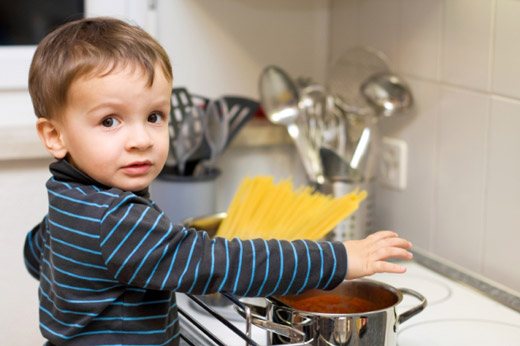
If chemicals get on the mucous membrane of the eye, they are washed, directing the stream from the inner edge of the eye to the outer. Do not touch or wipe damaged fabrics.
First aid for electrical burns
Until medical personnel arrive, it is necessary to provide first aid to save the person:
- The first and most important step is to turn off the source of electricity. To save a child, you can also use products made of rubber, plastic or wood.
- If you lose consciousness, check your pulse and breathing. If they are absent, resuscitation measures should be started - artificial respiration and chest compressions.
- Call an ambulance.
- Remove clothing from the affected area and cover it with a clean cloth.
- Pour your child warm water with 10 drops of a sedative, including valerian.
Sunburn
It is easy to get burned by direct sunlight and often this happens because the baby gets carried away playing in the water or sand on the beach.
How to help your child:
- hide indoors or in the shade;
- cover exposed areas with breathable fabric;
- give warm water in a small amount;
- apply a cool compress and lubricate with panthenol.
Severe sunburns are treated under medical supervision.
Main characteristics
Based on generally accepted medical concepts, a burn is a violation of the integrity of the skin or mucous membranes, which occurs as a result of unnatural contact with high temperature or certain chemical components.
A second-degree burn is characterized by damage not just to the top layer of skin (epidermis), but also to the dermis. This may lead to a violation of capillary permeability. In addition, nerve endings are also affected. Visually, 1st and 2nd degree burns can be identified by the following symptoms:
- The contact area becomes red and inflamed.
- There is pain that increases with touch. The burning pain can last about three days.
- The appearance of swelling with a 2nd degree burn and blisters with liquid internal contents.
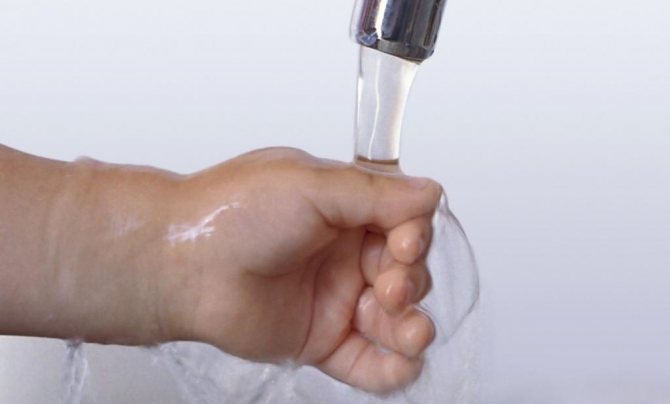
Traditional methods of treatment
Home remedies can only be used during the healing phase. There are many effective recipes that speed up this process:
- Peel the aloe leaf, chop it, and apply it to the affected area. The flower is non-toxic and does not cause allergies. Thanks to its penetrating ability, it quickly relieves inflammation and relieves pain;
- A burn from an iron on a child is washed with a decoction of linden flower;
- A fresh cabbage leaf can be applied to the affected area to relieve inflammation and cool. Change as it cools.
If there are children in the house, then parents are obliged to ensure that the first aid kit is equipped with emergency supplies. In case of unforeseen situations, you need to be prepared to maintain the child’s health and alleviate his condition.
You need to know exactly what to do at home. You can prevent burns in a child by explaining safety rules to him. At the same time, adults should not forget about them themselves!
